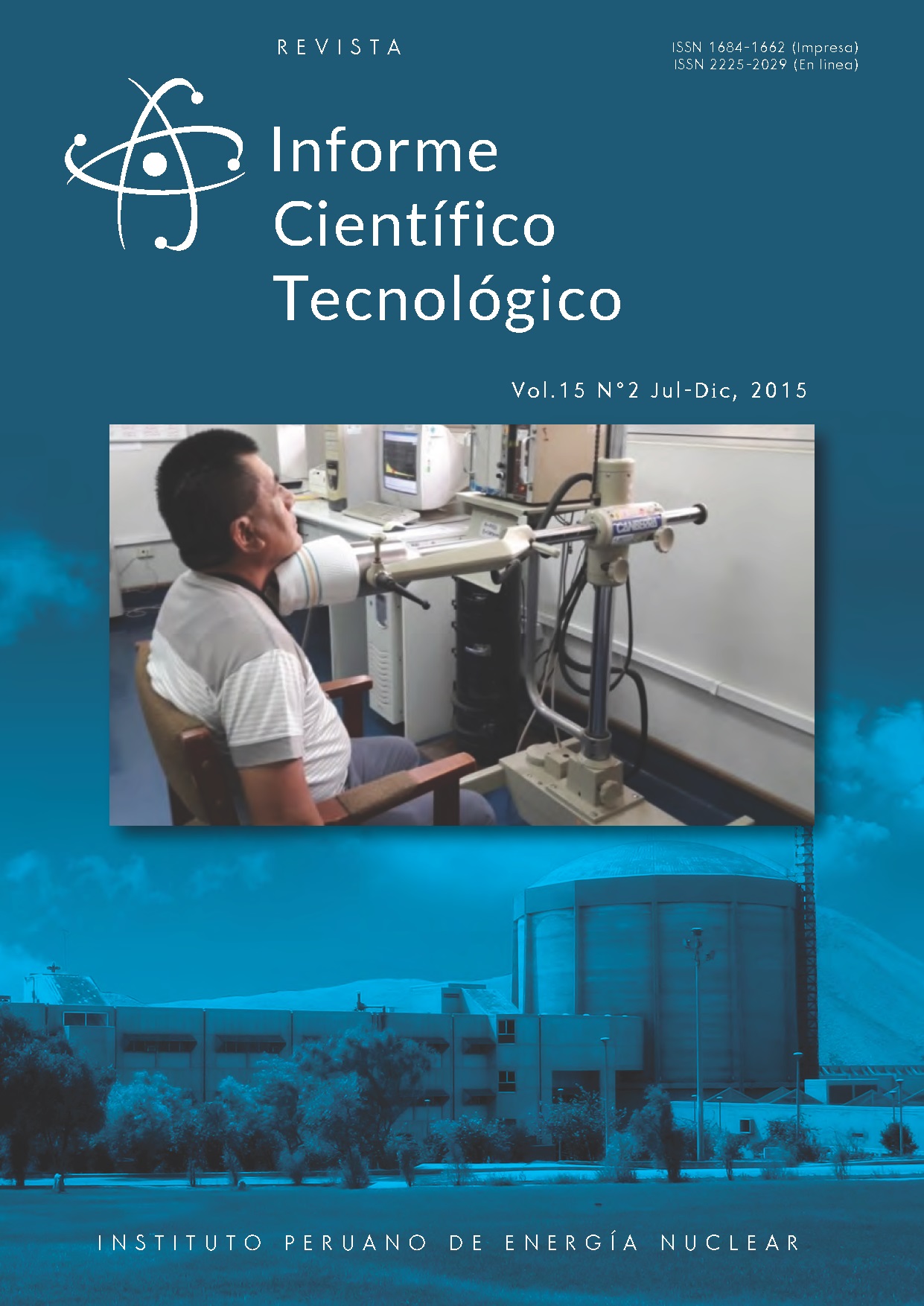Evaluation of the biosorption capacity of lead by filamentous fungi native to the Ticapampa mining tailings (Recuay, Ancash)
Keywords:
Bioremediation, Mine site rehabilitation, Lead, FungiAbstract
Lead biosorption was determined in five fungal biomasses isolated from the mining waste from the town of Ticapampa (Recuay province, Ancash Region) of which the strains with the highest percentage of lead sorption were studied. The process of biosorption was evaluated using a system of polyethylene tubes each containing 40 ml of solution contaminated with 200 ppm lead incubated at 30 °C under constant agitation at 150 rpm using 1 g/L of inactive fungal biomass. Removal of lead was measured by atomic absorption using the technique of flame, finding that the biomass of the species Talaromyces muroii, Talaromyces flavus and Penicillium velutinun (identified by DNA sequencing) are the most efficient to decrease the concentration of lead in aqueous solution thus achieving a maximum of its capacity of sorption of 189.7 mg/L, 82.7 mg/L and 33.8 mg/L, pH 6.0 respectively in approximately 48 hours of incubation. The results indicate that the native fungi isolated from environmental mining liabilities could be a cost effective biosorbent and easily cultivable for the removing of metal ions such as lead as in the case of environmental contamination by heavy metals.
Downloads
Downloads
Published
Issue
Section
License
Copyright (c) 2021 Mirella Pérez, Paola Rosas, Gretty Villena, Kety León, Marco Espinoza

This work is licensed under a Creative Commons Attribution 4.0 International License.








